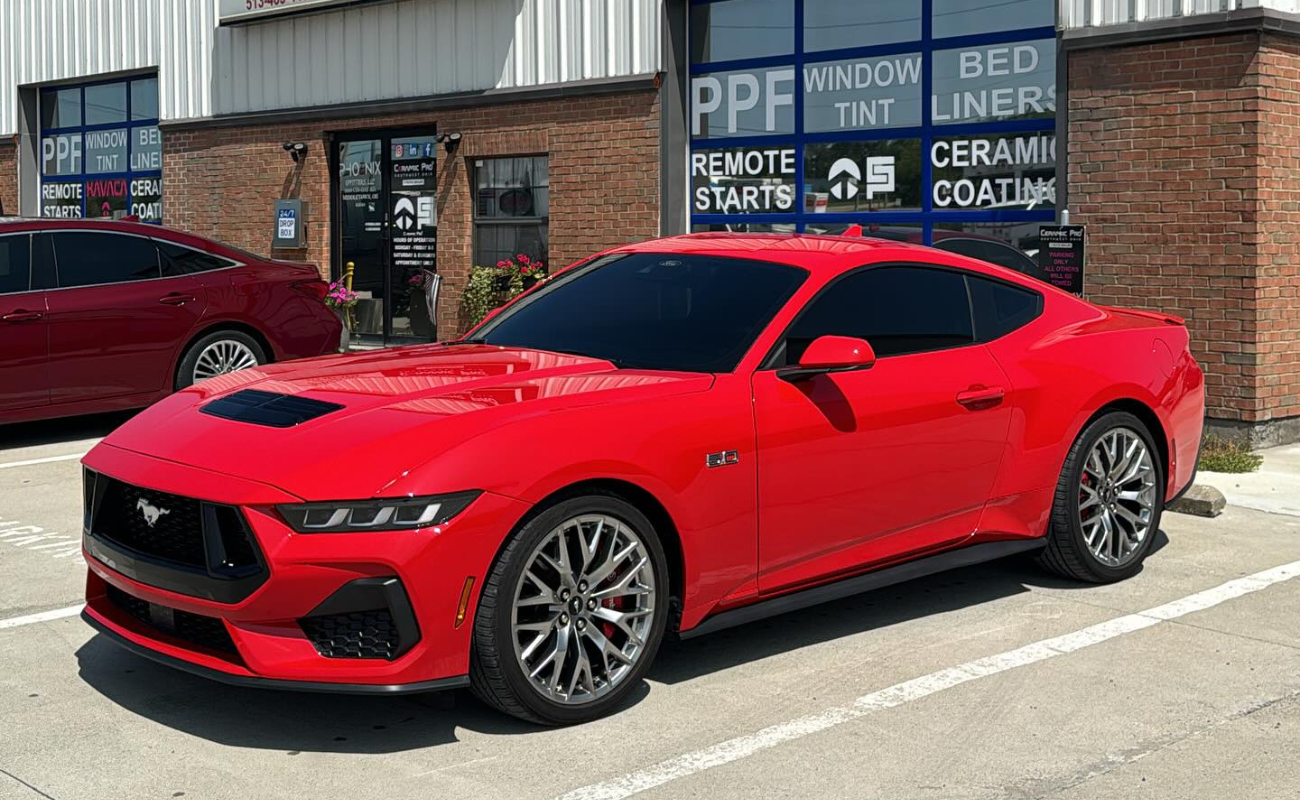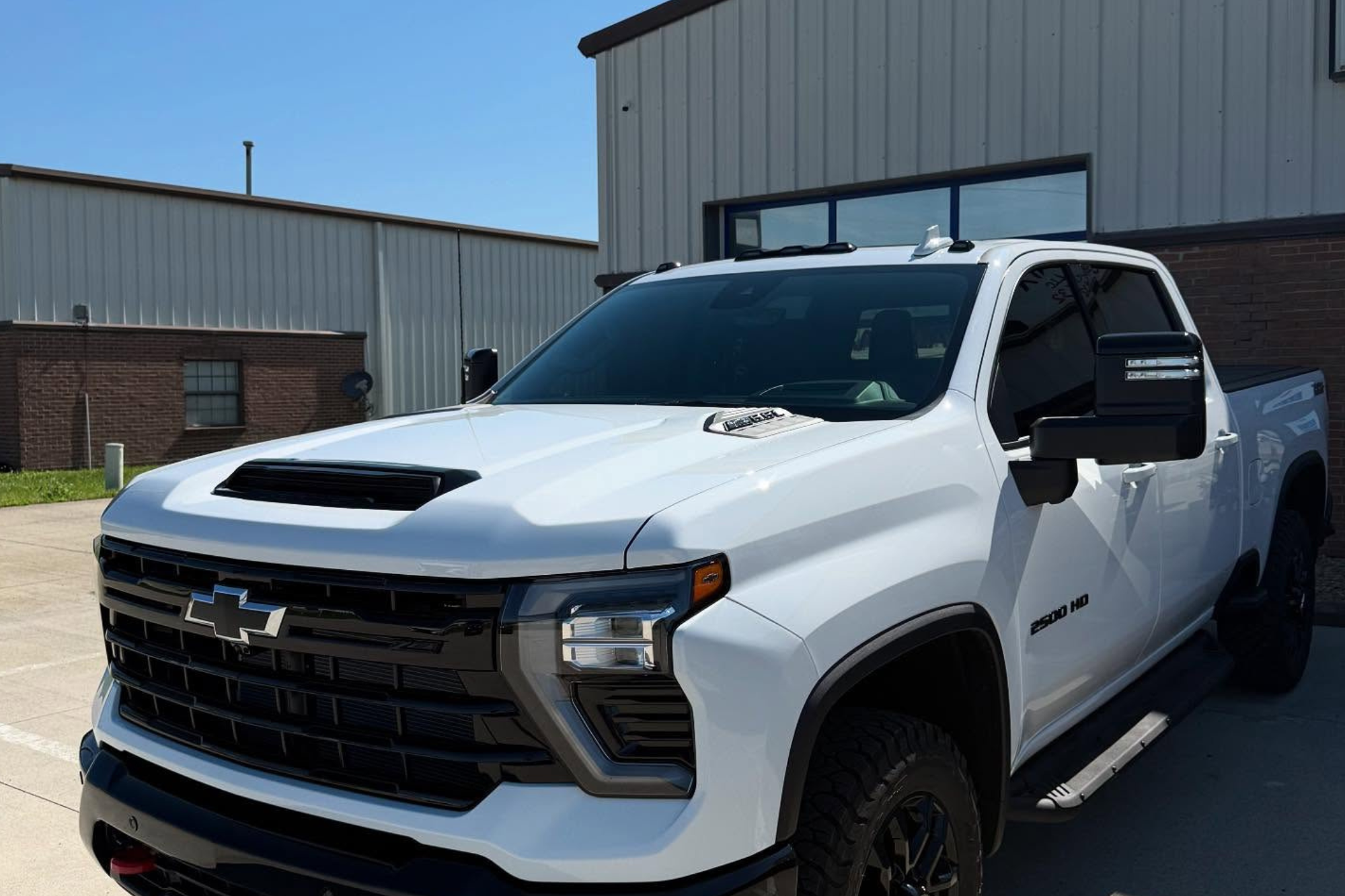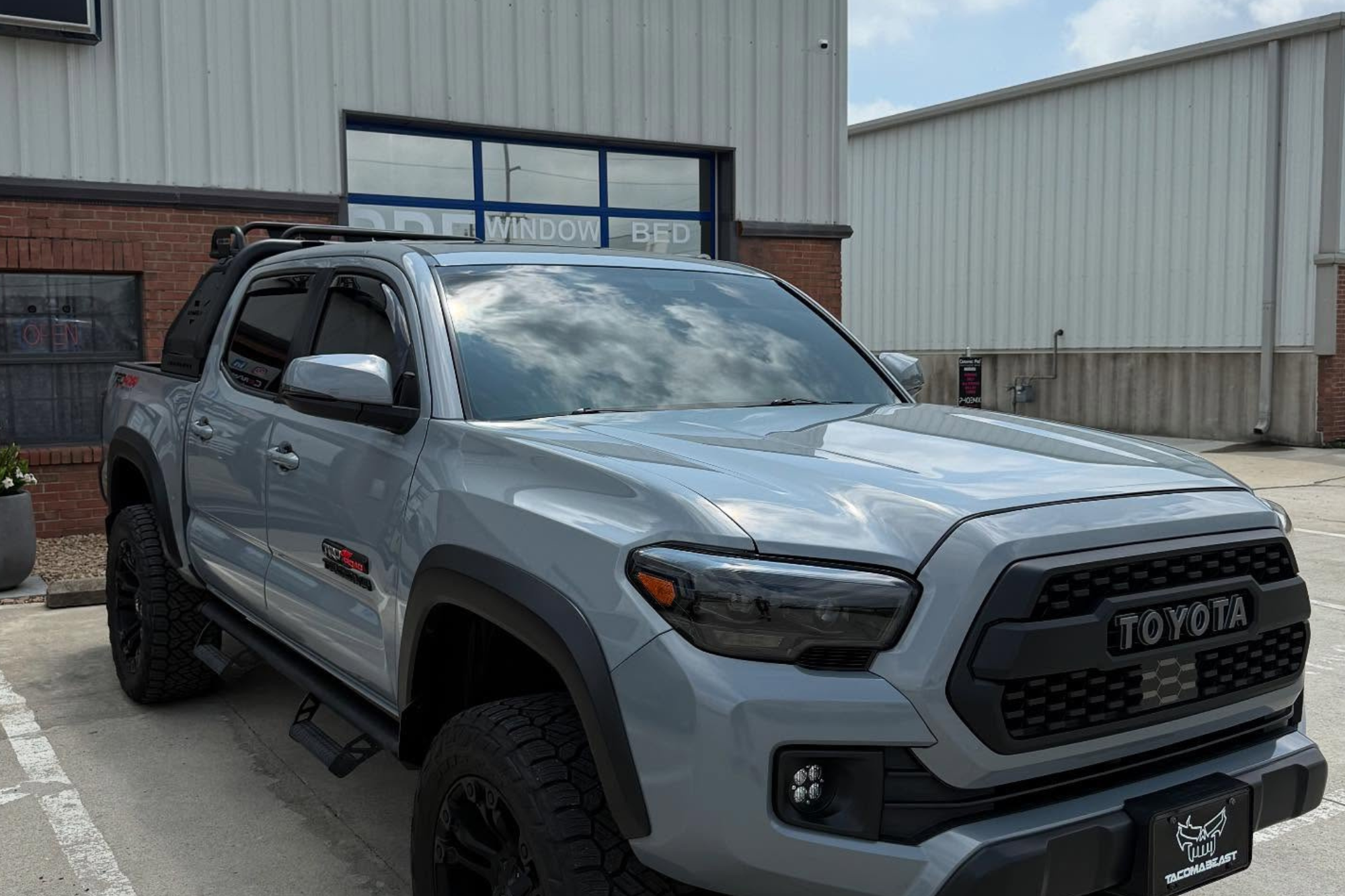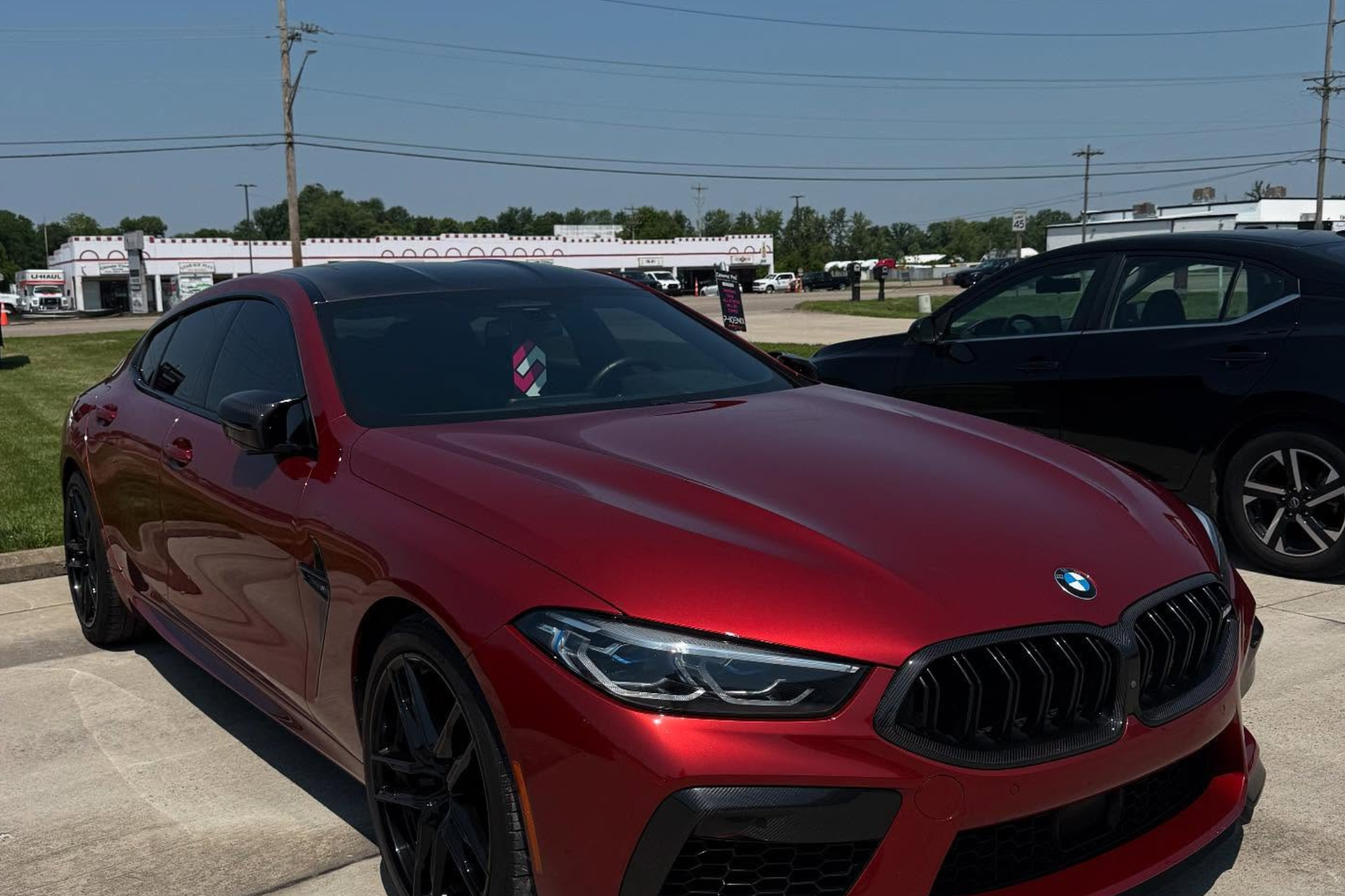
Imagine your car as a prized possession, gleaming under the sun like a polished gem. What if you could shield that shine from the grit of gravel and the menace of minute scratches? Paint Protection Film (PPF) does just that. From safeguarding your vehicle’s exterior to preserving its resale value, PPF offers a defense against daily wear and tear. Curious to unlock how this invisible armor works wonders?
Key Takeaways
- PPF is a transparent polyurethane film protecting cars from scratches and UV rays.
- Benefits include scratch resistance, UV protection, easy maintenance, and enhanced resale value.
- Types include pre-cut kits or custom installations based on budget and protection needs.
- The application involves precise measurement, cleaning, and specialized tools for durability.
- Maintenance tips: regular washing, spray sealant, avoiding tree parking, and considering ceramic coating.
What Is PPF?
If you’re considering protecting your car’s paint, you may have encountered the term Paint Protection Film (PPF). PPF is a transparent, thin, and self-healing film applied to a vehicle’s painted surfaces to protect them from various elements that can cause damage. These include rock chips, scratches, bug splatter, bird droppings, and UV rays. PPF acts as a sacrificial layer, absorbing the impact and preserving the original paint underneath.
The film is typically made from polyurethane and is designed to be durable while remaining virtually invisible when correctly applied. It’s engineered to resist staining, yellowing, and cracking, providing long-lasting protection for your car’s paint. PPF comes in various thicknesses, with thicker options offering higher levels of security but potentially being more visible on the car’s surface.
One of the key advantages of PPF is its self-healing properties. Minor scratches and swirl marks on the film can disappear when exposed to heat, such as sunlight or warm water. This feature helps the film maintain its clarity and protectiveness over time.
Additionally, PPF can be professionally installed on specific areas of your car, such as the front bumper, hood, fenders, and side mirrors, providing targeted protection where it’s most needed. By investing in PPF, you can keep your car looking newer for longer and maintain its resale value.
Benefits of PPF
Enhancing the protection of your vehicle’s paint through the application of Paint Protection Film (PPF) offers a range of benefits that can significantly impact its longevity and appearance. PPF provides a protective barrier against various elements that can damage your car’s paint, ensuring it stays looking newer for longer.
Here are the key benefits of using PPF:
- Resistance to Surface Marks: PPF acts as a shield against minor scratches from road debris, keys, or other objects, preserving your car’s pristine look.
- UV Protection: The film helps to block harmful UV rays, preventing paint fading and color degradation over time.
- Ease of Maintenance: PPF makes cleaning your car easier as dirt and grime can be wiped off more effortlessly, reducing the need for frequent detailing.
- Resale Value: By maintaining your car’s paint in top condition, PPF can enhance the resale value when you sell or trade in your vehicle.
Types of PPF
It’s essential to examine the various types of paint protection film (PPF) available in the market to better understand the world of PPF.
Regarding PPF, there are primarily two main types: pre-cut kits and custom installations.
Pre-cut kits are pre-designed templates cut to fit specific vehicle models. They offer a convenient and relatively affordable option for those looking to protect their car’s paint. Because they’re tailored to each vehicle’s make and model, they’re precise in their fit. However, the drawback is that they may not cover every inch of the car, leaving some areas vulnerable to damage.
On the other hand, custom installations involve applying PPF to the vehicle by hand, allowing full coverage and customization. This method provides the most comprehensive protection, as every inch of the car, including edges and curves, can be covered. Custom installations are ideal for individuals seeking a tailored solution that offers maximum protection.
When choosing between pre-cut kits and custom installations, consider your budget, desired level of protection, and the intricacy of your vehicle’s design. Both options have advantages, so it’s essential to assess your needs and preferences to determine the best type of PPF for your car.
PPF Application Process
Exploring the realm of Paint Protection Film (PPF) extends beyond understanding its types; it involves grasping the meticulous process of applying this protective layer to your vehicle’s exterior. The application process is crucial in ensuring that your car is shielded from the elements and maintains its glossy finish for an extended period. Here is a breakdown of the PPF application process:
- Preparation: Before applying PPF, the surface of your vehicle needs to be thoroughly cleaned and free of dirt, wax, or debris that could affect the film’s adhesion.
- Cutting the Film: PPF is carefully measured and cut to fit each section of your car, ensuring a precise fit that provides optimal coverage.
- Application: The PPF is then meticulously applied to the surface of your vehicle, using specialized tools to smooth out any air bubbles and ensure a seamless finish.
- Finishing Touches: Once the film is in place, it’s trimmed, and the edges are sealed to prevent it from lifting or peeling over time.
Mastering the PPF application process is essential for maximizing the protection it offers to your vehicle’s paintwork. This will provide you with peace of mind as you cruise the streets in a sleek and shielded car.
PPF Maintenance Tips
Implementing proper care practices is paramount when it comes to maintaining the longevity and effectiveness of your Paint Protection Film (PPF). To ensure your PPF continues to protect your car’s paint and appearance, here are some essential maintenance tips.
Regular washing is crucial in preserving your PPF. Use a pH-neutral automotive shampoo and a microfiber wash mitt to clean the film gently. Avoid harsh chemicals or abrasive materials that could damage the PPF. Using a separate bucket and mitt for the PPF will also prevent cross-contamination from dirt or debris picked up from other surfaces.
After washing, applying a spray sealant or quick detailer specifically formulated for PPF is recommended. This will help maintain the film’s hydrophobic properties and enhance its longevity. Be sure to follow the manufacturer’s instructions for the specific product you choose.
Avoid parking your car under trees or in areas where bird droppings or sap can come into contact with the PPF. These substances can be corrosive and may damage the film if left untreated for an extended period.
Lastly, consider using a ceramic coating on top of the PPF for added protection and ease of maintenance. Ceramic coatings provide an extra layer of defense against environmental contaminants and make cleaning the PPF even easier.
PPF Vs. Ceramic Coating
Comparing Paint Protection Film (PPF) and Ceramic Coating for your car involves assessing their distinct features and advantages.
PPF is a clear polyurethane film that provides a physical barrier against scratches, rock chips, and other external damage. On the other hand, ceramic coating is a liquid polymer applied to the car’s exterior, forming a semi-permanent bond with the paint.
When deciding between PPF and ceramic coating, consider the following points:
- Protection Level: PPF offers superior protection against physical damage like marks and rock chips, while ceramic coating protects against UV rays and chemical stains.
- Durability: PPF is more durable and can resist heavier impacts compared to ceramic coating, which may wear off over time and require reapplication.
- Application Process: PPF installation is more complex and usually requires professional assistance, whereas ceramic coating can be applied by car owners but may necessitate meticulous preparation.
- Cost: PPF tends to be more expensive upfront due to material costs and installation, while ceramic coating is more cost-effective but may require more frequent reapplications.
Understanding these differences can help you make an informed decision based on your car’s specific needs and your preferences for long-term protection.
Cost of PPF
As you consider the advantages of Paint Protection Film (PPF) for your car, understanding the associated costs is a pivotal aspect of the decision-making process.
The cost of PPF installation can vary based on several factors, such as the size of your vehicle, the complexity of the installation process, the quality of the film used, and the expertise of the installer. On average, a full-car PPF installation can range from $1,500 to $5,000 or more.
The cost breakdown typically includes the price of the PPF material, labor charges for installation, and additional services like paint correction or surface preparation. Higher-quality films tend to be more expensive but offer better protection and longevity.
Additionally, opting for professional installation ensures a proper fit and finish, maximizing the effectiveness of the PPF.
While the initial cost of PPF installation may seem high, the long-term benefits must be considered. PPF helps maintain your car’s resale value by preserving its paint finish and reducing the risk of scratches, chips, and other damage.
Ultimately, investing in PPF can save you money on repainting or touch-up costs in the future, making it a worthwhile investment for protecting your vehicle and maintaining its aesthetics.
DIY PPF Installation
To tackle a DIY PPF installation for your car, meticulous preparation and attention to detail are key. Applying paint protection film yourself can be rewarding, but it requires patience and precision. Here are some essential tips to guide you through the process:
- Clean Thoroughly: Before installing, ensure your car is impeccably clean. Any dirt, dust, or debris left on the surface can affect the adhesion of the film.
- Use Proper Tools: Invest in high-quality tools such as squeegees, razor blades, and heat guns to ensure a smooth and professional-looking finish.
- Start Small: If you’re new to PPF installation, practice on a small, inconspicuous area first to get a feel for the process before tackling larger sections.
- Follow Instructions: Different PPF brands may have specific installation instructions, so be sure to read and follow them carefully to achieve the best results.
Choosing a Professional PPF
When selecting a Professional PPF, consider their credentials and experience in the industry to ensure they have the necessary expertise. Assess the quality of their previous work by requesting to see examples or reading reviews from past customers. Additionally, inquire about the warranty coverage they offer to protect your investment in the paint protection film.
Credentials and Experience
When selecting a professional to install paint protection film (PPF) on your vehicle, it’s crucial to consider their credentials and experience. Ensuring that the individual or company you choose has the right qualifications and a solid background in PPF installation can make a significant difference in the outcome of the job. Here are some key points to look out for:
- Certifications: Look for professionals who’ve certifications from reputable organizations in the automotive industry.
- Experience: Prioritize professionals with a proven track record of successfully installing PPF on various vehicles.
- Training: Check if the professionals regularly attend training sessions to stay updated on the latest techniques and technologies in PPF installation.
- Reviews and References: Read customer reviews and ask for references to gauge the quality of work and customer satisfaction.
Quality of Work
Considering the pivotal role that the credentials and experience of a paint protection film (PPF) professional play in ensuring a successful installation, the quality of work they deliver is paramount when selecting the right professional for the job.
When evaluating the quality of work of a professional PPF, look for consistency in their installations. A skilled professional will ensure that the film is applied without any bubbles, wrinkles, or misalignments. Attention to detail is crucial, as even the smallest imperfection can affect the overall appearance and protective capabilities of the PPF.
Additionally, the quality of the materials used by the professional can significantly impact the result. High-quality PPF materials are durable, resistant to yellowing, and provide better protection against surface marks and environmental elements.
Warranty Coverage
To ensure comprehensive protection for your vehicle, it’s essential to consider the warranty coverage offered by professional PPF when selecting the right professional for the job. When evaluating warranty coverage, look for the following key aspects:
- Duration: Ensure the warranty covers your desired period, whether short-term or long-term.
- Coverage: Check what types of damage are included in the warranty, such as yellowing, peeling, or bubbling.
- Conditions: Understand any specific requirements or conditions that must be met to maintain the validity of the warranty.
- Transferability: If you plan to sell your vehicle, see if the warranty can be transferred to the new owner for added value.
So there you have it – PPF is like a suit of armor for your car, protecting it from the elements and keeping it looking pristine. With its scratch resistance, UV protection, and easy maintenance, PPF is a smart investment for any car owner. Whether you choose to DIY or go with a professional installer, the benefits of PPF are clear. Keep your car shining bright and protected with paint protection film!






